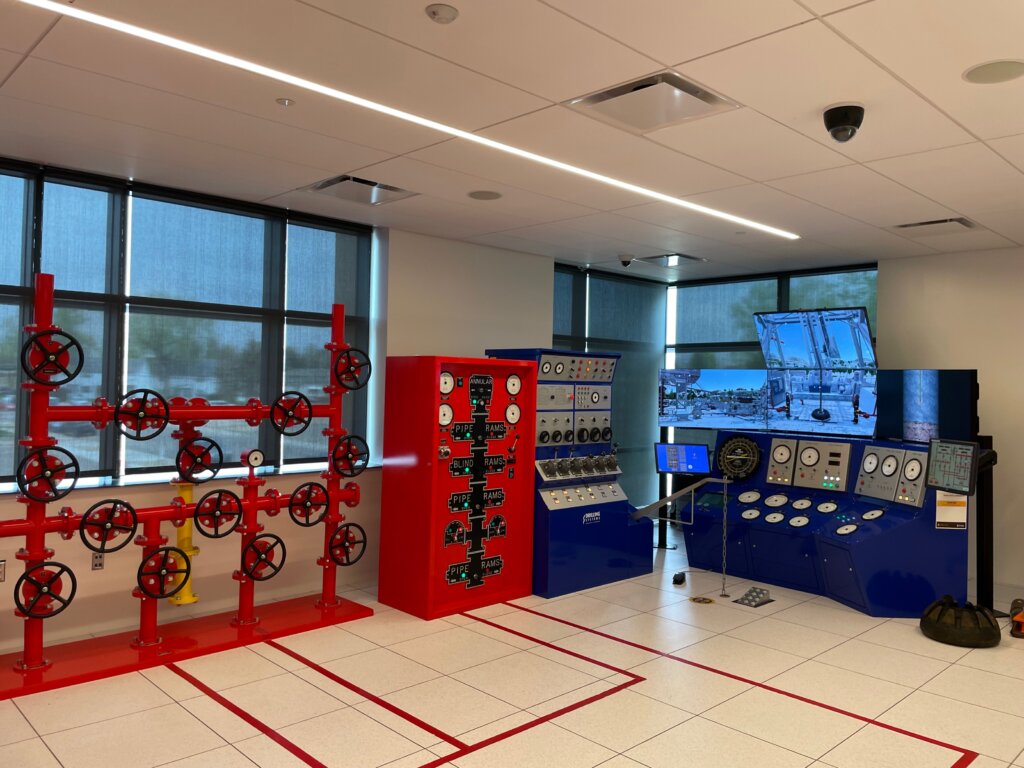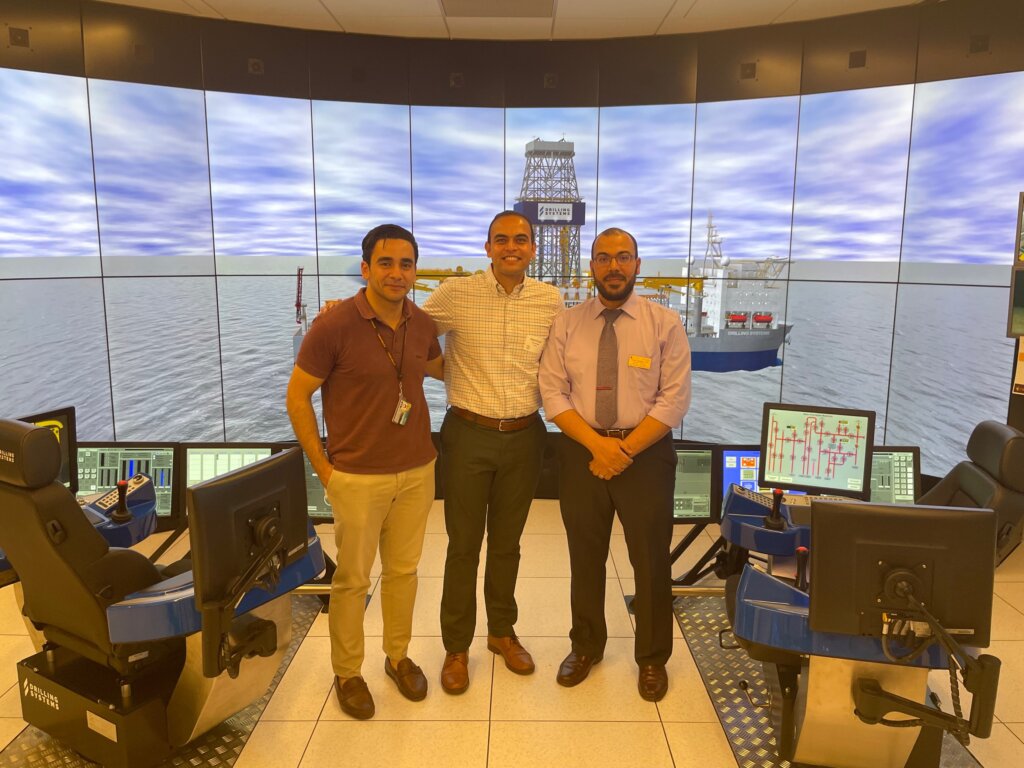Can Wyoming lead the nation in deploying direct air capture (DAC) technology?
In May, C2ES convened more than 50 stakeholders from government, private companies, labor, academia, and NGOs at a roundtable in Laramie, Wyoming, to dive into the potential economic opportunity of developing DAC in the state. Discussions explored where technological, regulatory, or practical factors might pose challenges. While many participants expressed skepticism about whether the technology would live up to the high expectations of its strongest proponents, all shared excitement about the technology and expressed optimism that new DAC projects could bring jobs and investment to communities across the state, especially those historically reliant on fossil fuel extraction or utilization.
While in Laramie, we visited the University of Wyoming’s School of Energy Resources, including the Drilling and Well Completions Simulation Facility, a state-of-the-art training facility led by Dr. Tawfik Elshehabi. We explored a well-drilling simulation for carbon storage wells in virtual reality. We also had the chance to go through the different stages of safe carbon injection operations, modeled for our event using real data from CarbonSAFE wells in Wyoming. The hands-on simulation demonstrated that carbon storage operations can utilize existing, transferrable skills from the existing fossil energy workforce.
Private and Public Sector Set the Market for DAC
DAC is a crucial piece of the decarbonization puzzle in reaching our goals of keeping global warming to 1.5 degrees above preindustrial levels, and to be most effective, it must be deployed alongside ambitious efforts to reduce emissions.
The federal government and the private sector have recently put significant funding toward developing and deploying this crucial, though nascent, technology. The Bipartisan Infrastructure Law created a $3.5 billion program through the Department of Energy to develop four “Regional Direct Air Capture Hubs” to demonstrate and scale DAC development, deployment, and operation.
Additionally, the Inflation Reduction Act changed the game for DAC developers by more than doubling the 45Q tax credit to as much as $180 per ton of carbon captured from the atmosphere and permanently stored. Finally, the Department of Energy just awarded $40.5 million to the University of Wyoming as part of a $2.5 billion program to develop new or expanded large-scale commercial carbon sequestration projects.
In the private sector, major tech companies like Microsoft, Shopify, and Stripe have committed more than $1 billion in funding to carbon removal solutions, including DAC. Microsoft has a target of being “carbon negative” by 2030.
In Wyoming, Gov. Mark Gordon has a similar goal for the state, and has recently leaned into the idea that Wyoming can lead the nation on carbon capture, carbon removal, and carbon storage, ultimately removing more carbon than it emits. This is an ambitious goal for a state that has historically supplied much of the coal, oil, and natural gas used to power the rest of the country. However, the state has a track record of supporting carbon management, and is home to some of the most suitable geology for permanent storage in the nation. The state also has a highly-skilled energy workforce ready to deploy on new projects. In this way, geology can serve as a natural resource to the state in its role as a storage medium as much as it has served as an extraction source.
Key Themes from the Roundtable Conversation on Direct Air Capture in Wyoming
In both formal and informal discussions throughout the roundtable, several key themes emerged.
First, there is broad excitement about the carbon management opportunity among business, labor, local government, and tribal leaders. Many in the roundtable shared the perspective that carbon management is a natural opportunity for the state to monetize its mineral extraction and its geologic sequestration potential. To take advantage of this opportunity, participants called for greater clarity on the rules governing access to underground storage reservoirs and liability for ensuring the permanent storage of captured carbon.
Second, access to low-carbon energy is a major hurdle to scaling DAC in Wyoming. Although the state already meets more than 20 percent of its electricity needs with wind power, the additional clean electricity and heat needs of large DAC projects are significant. This means many DAC developers will also need to become energy developers, building out large-scale renewables or supporting carbon capture and storage on existing fossil-based power plants.
DAC is successful only if it operates to its intended purpose—if it removes more carbon from the atmosphere than its own operations emit. To ensure DAC operations are truly carbon negative and eligible for carbon credits, they must be powered by low-carbon energy. The permitting challenges of adding new generation sources to the grid, coupled with community opposition to new solar and wind, pose a challenge for new DAC projects to access the necessary clean power. Roundtable participants called for cooperation between utilities, developers, and regulators, and suggested alternative arrangements like third-party power providers or microgrids to help expedite energy sourcing.
Finally, communities were central to every discussion. Participants called for greater community education about what DAC is and the potential benefits and risks of deploying it. They celebrated the work of one developer to build relationships of trust and transparency with the local community before even seeking approval for the project and pushed for continued collaboration. Other participants highlighted the need for holistic engagement with local communities of residents and workers that not only engages a range of stakeholders to ensure their needs are met, but also does so throughout the process.
Ultimately, DAC is a new technology that has yet to be deployed at scale, and much about how it will be implemented in practice in the United States remains unknown. It is up to the first generation of projects to set the stage. Wyoming has the opportunity to lead the nation in developing and deploying this crucial technology in a way that draws investment to the state and uplifts local workers and communities.


